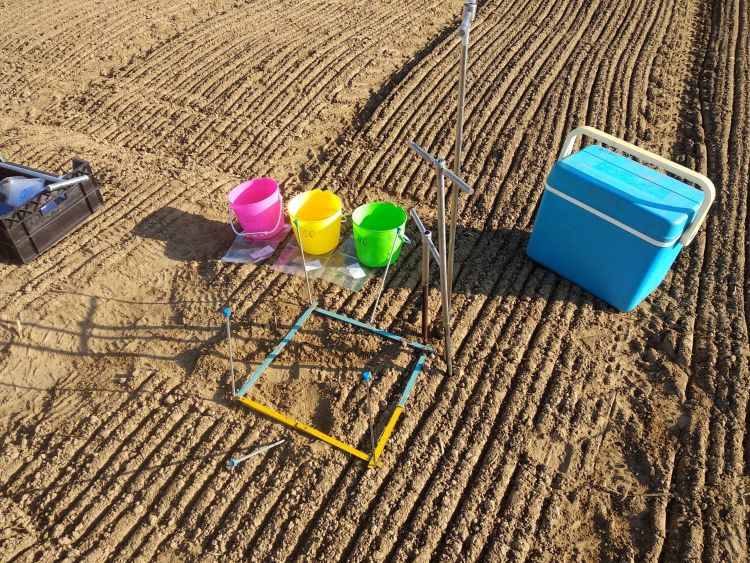Profil Tensiometer
Work Package III.V.

A precise understanding of the water balance in fields and meadows is becoming increasingly urgent because, due to the shifting precipitation distribution and summers becoming drier, the conflict over groundwater use between agricultural irrigation and drinking water production is increasing. Even in our region, the problems are becoming apparent. Throughout southern Europe, this is a huge problem with corresponding challenges and associated market opportunities.
The soil matrix is the grain structure with the small interstices in which water is bound by capillary forces. The smaller the pores, the stronger the binding capillary forces. Soil tension describes the negative pressure that must be created to extract water from the soil matrix. Soil tension is therefore a state variable that characterizes the hydraulic availability of soil water. The precise relationship between soil water tension and soil moisture is characteristic of the pore size distribution and ultimately of the water storage capacity of different soil types, which differ in texture, grain size, and particle size distribution. Soil moisture and soil moisture tension cannot be differentiated if the exact hydraulic characteristics of the respective soil are unknown. Therefore, they must usually be measured separately in order to accurately characterize soil hydraulics. This information is necessary to assess the water holding capacity, stored soil water, and soil susceptibility to drought, and to develop an optimized irrigation strategy for individual fields.
Soil moisture tension is usually measured using tensiometers: cylinders made of porous ceramic that are inserted into the soil and in which a negative pressure is then measured using a membrane. Disadvantages of conventional tensiometers are that, firstly, they lose water over time and can run dry, which is why they must be refilled. Secondly, the outside of their pressure cell membrane must be connected to the atmospheric pressure at the soil via a hose if the measuring probe is buried at greater depths. Furthermore, the exposed ceramic at the probe tip is mechanically sensitive. Individual soil moisture tension measurements are not statistically representative due to the natural or cultivation-induced heterogeneity of soils. The variation of soil moisture tension with depth is particularly important for better understanding the interplay between the root space of crops, soil horizons, and water availability, and for initiating measures for improvement. The goal of this work package is therefore to develop a profile-measuring soil moisture tension probe. Unlike continuous soil moisture profiling using spatial TDR, the soil moisture profiling probe will consist of a combination of discrete point measurements from individual measuring units mounted one above the other. In collaboration with the project’s users, suitable measurement principles will be identified and evaluated, and specifications will be developed.